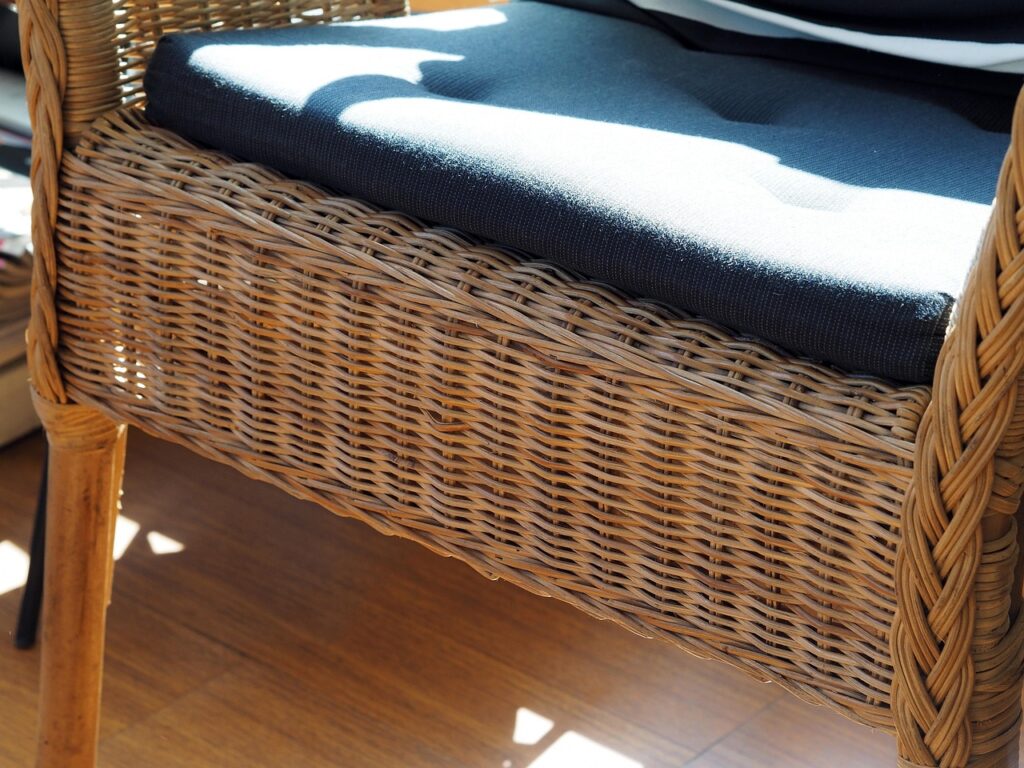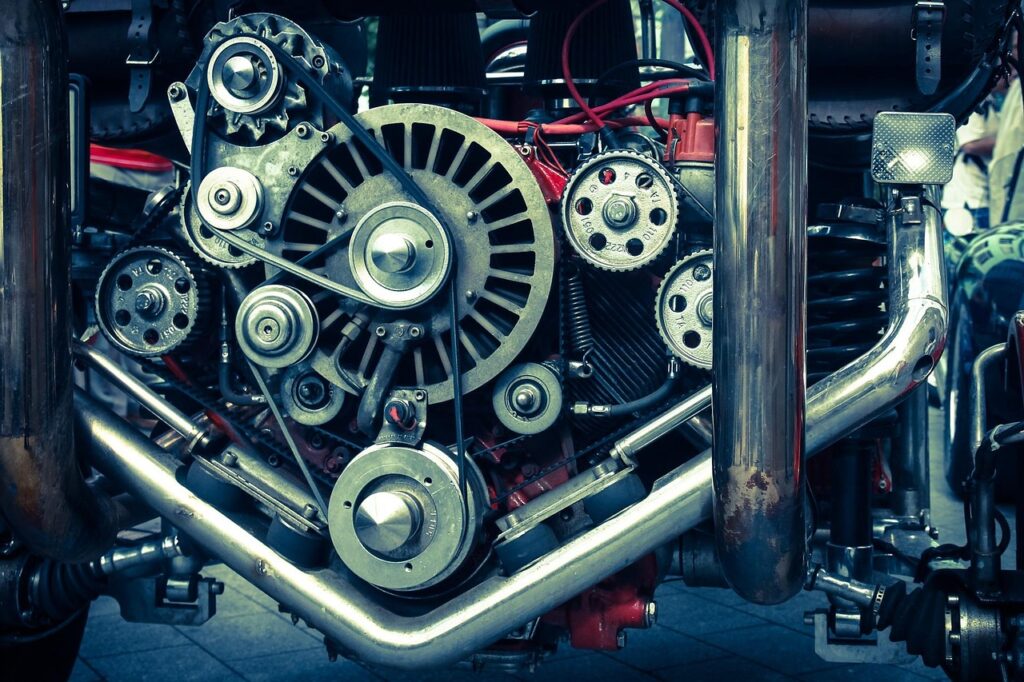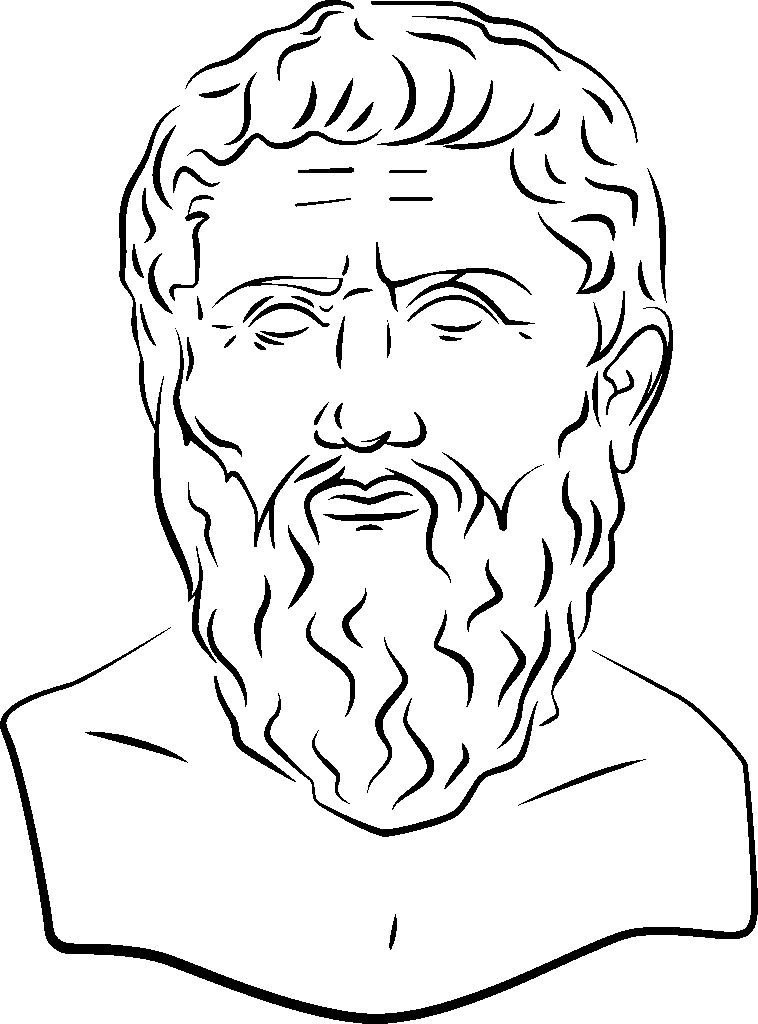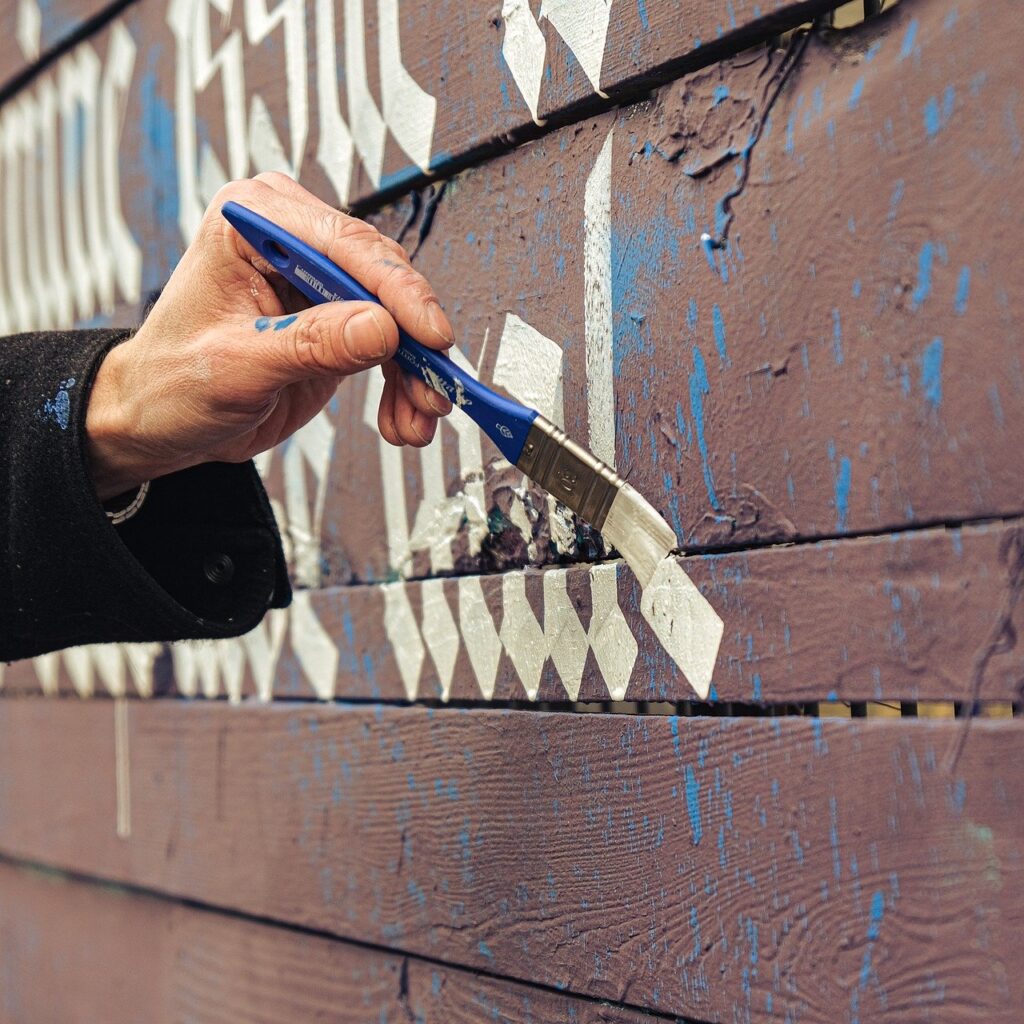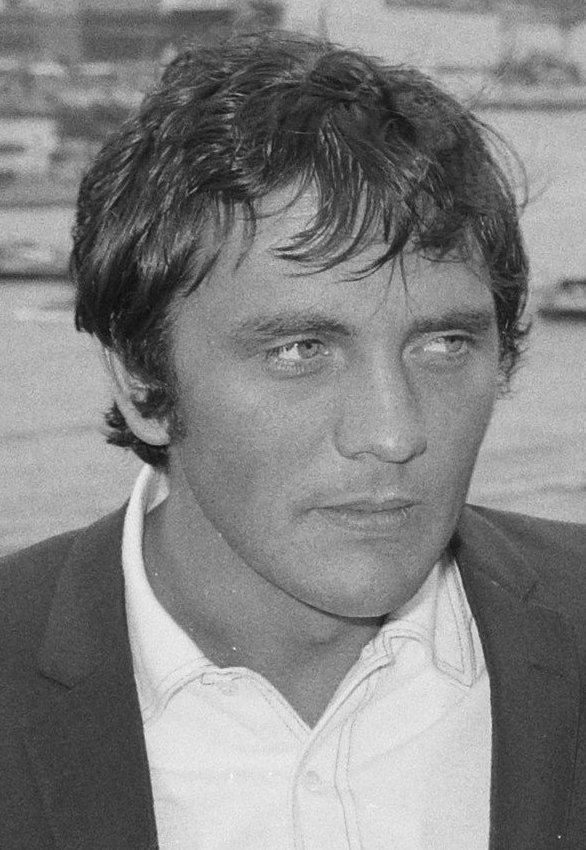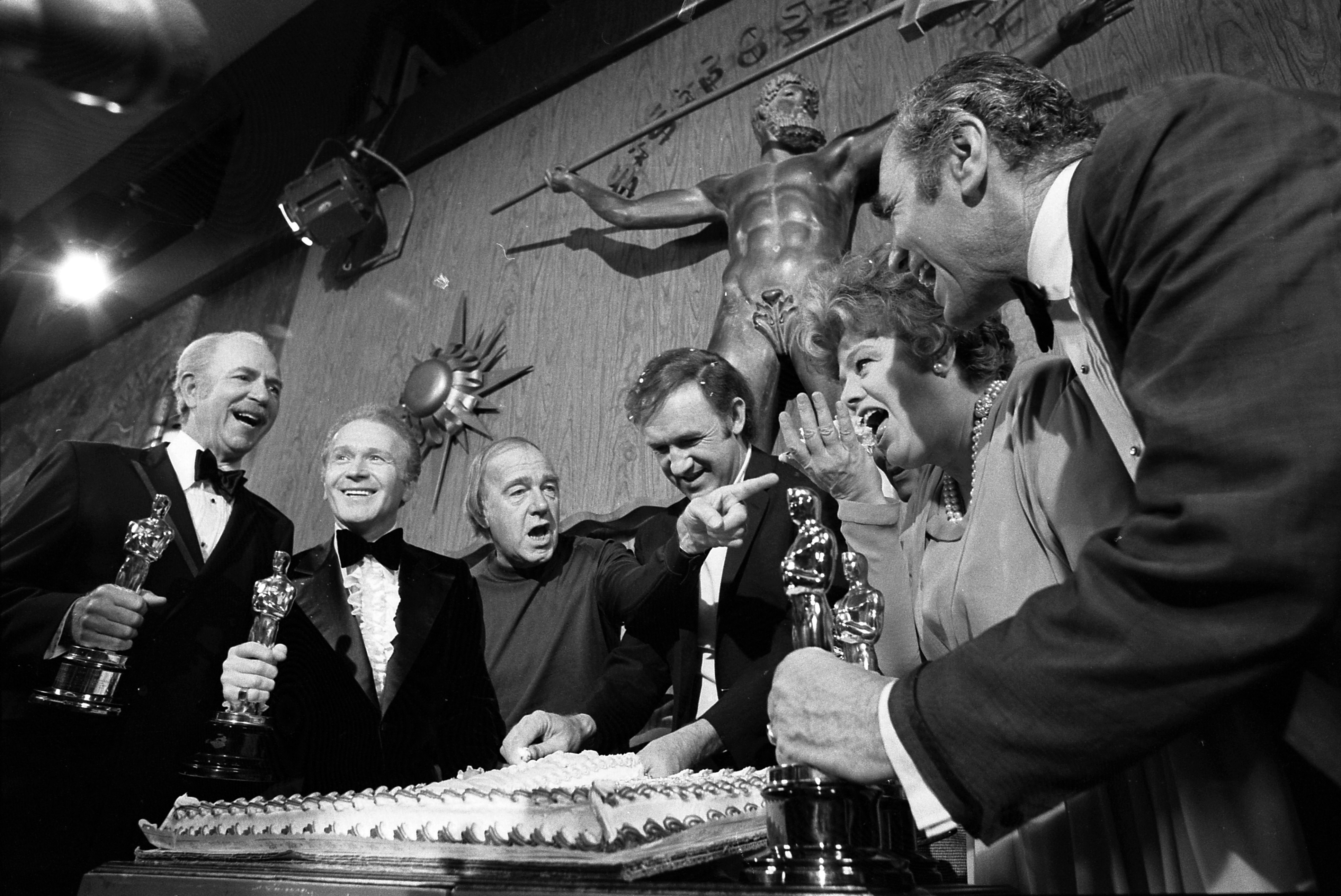
John McQueen, a visionary artist whose work profoundly redefined the boundaries of contemporary basketry, died on July 26, 2025, at the age of 82. His passing marks the end of an extraordinary life dedicated to transforming the unassuming elements of nature — burrs, bark, and vines — into intricate forms that challenged traditional perceptions of art and craft. Heralded by the American Craft Council for “redefin[ing] the field of contemporary basketry to embrace nonfunctional sculpture,” McQueen carved out a unique space in the art world, proving that profound artistic expression could emerge from the most humble of origins and materials.
McQueen’s artistic journey was as unconventional as his creations. From his early days as an auto mechanic to his late-career recognition as “the most influential contemporary bark sculptor in the world,” his path was characterized by an unyielding curiosity and a deep reverence for the natural world. He eschewed conventional artistic materials, preferring to gather his supplies from his own backyard, demonstrating an intimate relationship with his environment that infused every piece he created with authenticity and a quiet strength. His works, which often hovered “with great humor, in the gap between craft, sculpture and Conceptual Art,” as observed by Roberta Smith of The New York Times, invited viewers to reconsider the very essence of what art could be.
Today, we embark on a journey through the early chapters of McQueen’s remarkable life and artistic evolution. We will explore the pivotal moments that ignited his creative spirit, delve into the groundbreaking techniques and philosophies that set his work apart, and appreciate the profound ways in which he wove not just natural fibers, but also meaning and language, into every intricate form. His story is one of perseverance, innovation, and an unwavering commitment to a singular artistic vision that continues to resonate.
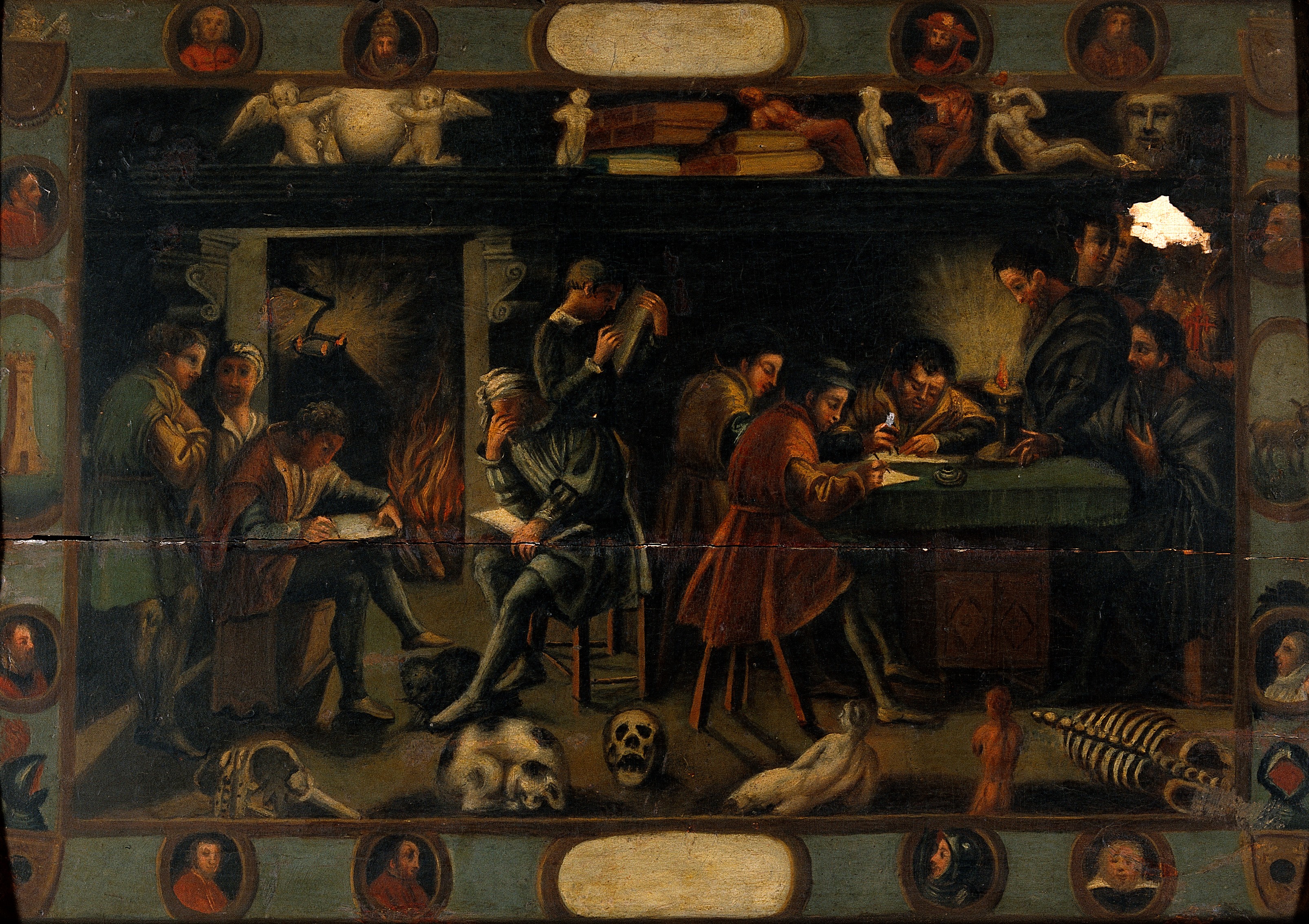
1. **Humble Beginnings and Early Artistic Stirrings**John McQueen’s artistic awakening unfolded in an unexpected setting. In the early 1970s, he found himself in Albuquerque, N.Y., working as an auto mechanic. This period was not devoid of creative experimentation, however, as he was already crafting singular artworks from adobe and sod. One memorable piece involved training grass to grow upside down, using a metal armature and a grow light, a process he reportedly enjoyed because “he had to water his sculpture.”
It was a serendipitous encounter at a state fair that profoundly redirected his artistic trajectory. He observed a Pueblo artisan intently constructing a basket from the inside out, a technique that immediately captivated him. This moment sparked a deep fascination with the rich basket-making traditions of the local Indigenous people, a tradition that would soon become the cornerstone of his life’s work.
Before long, McQueen had abandoned his adobe and sod creations, turning his focus to studying the diverse baskets he encountered. He began to try his hand at making his own, though he later humbly admitted, “It wasn’t very good.” This initial struggle, however, only fueled his determination, setting him on a path of relentless experimentation and self-discovery that would culminate in a groundbreaking artistic practice.

2. **Formal Education and the Ascent of Fiber Art**McQueen’s perseverance in his newfound passion for basketry led him to pursue formal art education. He enrolled in the textiles program at the Tyler School of Art and Architecture at Temple University in Philadelphia, where he ultimately earned a master’s degree in fine arts. This period was a fertile ground for artists exploring new mediums and approaches.
During the 1970s, fiber art was experiencing a significant ascendancy in the art world. Traditional crafts, long relegated to categories separate from fine art, were being reimagined by artists who sought to push their boundaries and explore their conceptual potential. McQueen arrived at Tyler at a time when the art world was open to such transformations, providing an ideal environment for his burgeoning vision.
Against this backdrop of artistic re-evaluation, McQueen’s work quickly distinguished itself. He was not content with replicating existing techniques; instead, he developed his own unique patterns and methods, producing forms that were entirely novel. This innovative spirit, nurtured within an academic setting that encouraged exploration, laid the foundation for his pioneering contributions to contemporary fiber art.
Read more about: Unleashing the Aquatic Titans: 14 ‘Boat Cadillacs’ that Ruled the Golden Age of Waterborne Luxury
3. **A Redefinition of Basketry**John McQueen is widely acknowledged as a true pioneer of contemporary basketry. His genius lay in his ability to push the boundaries of this ancient craft, transforming it from a functional art form into a vehicle for non-functional sculpture. The American Craft Council, in a statement after his death, lauded him for having “redefined the field of contemporary basketry to embrace nonfunctional sculpture, exploring concepts of containment and space.”
This redefinition involved a conscious blurring of the lines between traditional craft, sculpture, and even Conceptual Art. McQueen’s fascination with baskets, ignited by the Pueblo artisan, evolved beyond mere utility. He rarely employed conventional basket forms or patterned weaving techniques, choosing instead to interrogate the very purpose and potential of a basket. His approach inherently questioned the established utility versus art dichotomy.
As McQueen himself articulated to American Craft magazine in 1999, “What I wanted to make was invisible, transparent architecture.” This aspiration speaks to his desire to transcend the practical limitations of a basket, using its inherent structure to explore abstract ideas of space, volume, and perception. He sought to create a kind of containment that was not truly contained, making the interior space visible and exposed, an idea he believed was deeply rooted in the basket tradition: “That’s what you do with a basket. You look inside it.”
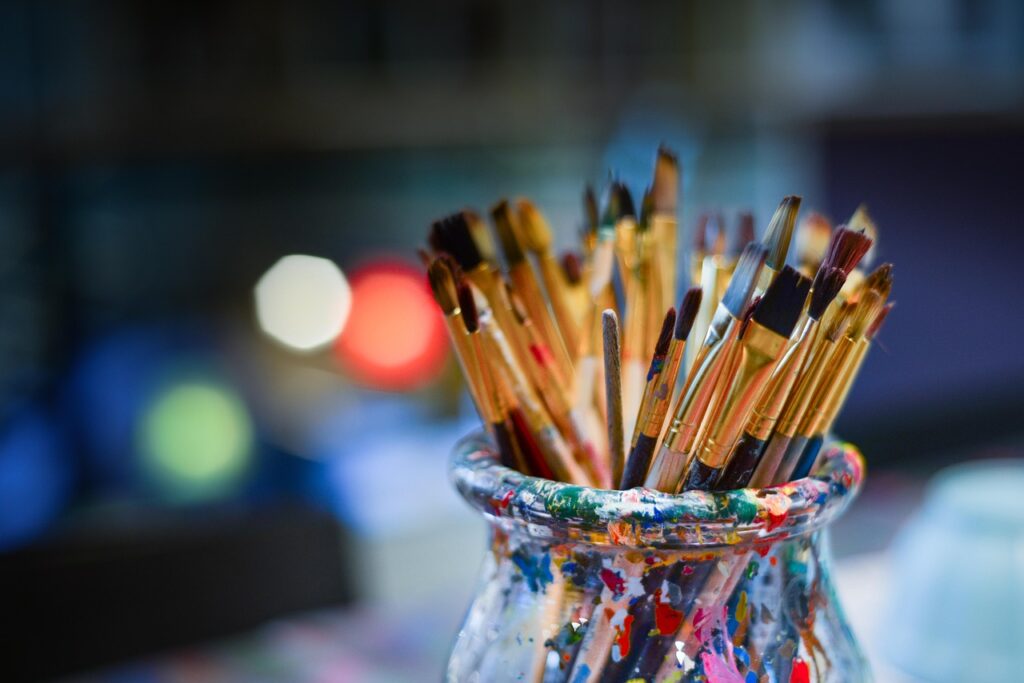
4. **The Raw Material: Nature’s Bounty**One of the most defining aspects of John McQueen’s artistic practice was his profound connection to the natural environment and his meticulous sourcing of materials. He gathered almost all of his basket materials from his own backyard in Saratoga Springs, N.Y., and the surrounding countryside, a practice that underscored his deeply sustainable and organic approach to art-making.
His method of collecting was entirely hands-on and often integrated into his daily life. He would pull cattails from ponds, sometimes at the request of local farmers who wished to clear brush to maintain water quality for their livestock. As he hacked willow sticks and vines, burrs would inevitably cling to his clothing, which he would then incorporate into his works, transforming these natural nuisances into artistic elements. He even chopped firewood from fallen trees, always reserving any unusually shaped logs to use as molds for his distinctive bark baskets.
This self-reliant approach was famously encapsulated by Tom Grotta, the co-curator at his gallery, Browngrotta Arts, who remarked, “He never bought anything except string.” This statement highlights McQueen’s commitment to self-sufficiency and his belief in the inherent artistic value of found natural objects. His work celebrated the “marvels of natural materials,” a sentiment echoed by Roberta Smith, and demonstrated how an artist, deeply attuned to his environment, could create profound beauty from what others might overlook.
5. **Signature Forms and Techniques**John McQueen’s work was instantly recognizable for its distinct and often whimsical forms, which emerged from his inventive patterns and techniques. He created strange biomorphic and anthropomorphic shapes, imbuing his pieces with a sense of organic life and unexpected personality. His hands seemed to coax the raw materials into expressions that were both primal and sophisticated.
He achieved marvelous effects with materials like burrs, transforming their prickly surfaces into intricate snarls of goldenrod that bristled with energy. He stitched together furry patches of bark, crafting them into “weird and lumpy shapes,” demonstrating a playful disregard for conventional aesthetic smoothness. Strips of bark were plaited to form critter-like figures and unique vessels, often embedded with subtle narratives or messages.
His mastery also extended to willow vines, which he wove into “hairy whorls,” creating textures that invited both visual and tactile engagement. Beyond these specific examples, McQueen’s three-dimensional objects encompassed a wide array of forms, including books, fish, birds, lions, and human figures, as well as various structures and vessels, some resembling baskets and others entirely divorced from that traditional form. His willingness to experiment with diverse natural elements, and occasionally plastic and cardboard, ensured a constantly evolving and surprising body of work.
Read more about: Blast from the Past: Unearthing 13 ’80s Film Gems You Absolutely Need to See (But Nobody Ever Mentions!)

6. **The Power of Language: Words in Weave**One of the most distinctive and conceptually rich aspects of John McQueen’s art was his deliberate integration of language. He bridged the natural and human worlds by incorporating poetry and wordplay directly into his constructions, inviting viewers to engage with his pieces on both a visual and intellectual level. This textual element transformed his sculptural baskets into carriers of thought, establishing a fertile dialogue between form and meaning.
Words first explicitly entered his works in 1979 with “Untitled #88.” In this notable piece, “a web of words creates the container in part and conveys an idea,” featuring the evocative phrase “Always is always a ways away.” This early example set a precedent for a practice that would become central to his artistic identity. The words were not merely decorative; they were structural and conceptual, integral to the very essence of the artwork.
His subsequent works continued this rich vein, often abounding with puns, rebuses, and messages that encouraged decipherment. This playful yet profound engagement with language allowed McQueen to inject humor, paradox, and deeper philosophical inquiry into his art. As Pat Hickman, a former ACC Awards Committee Member, observed, “His frequent use of words links him—as maker—to the natural materials his hands hold as he builds complex structures.” These textual inclusions cemented his position at the forefront of contemporary basketry as conceptual art, adding layers of narrative and introspection to his already innovative forms.
Read more about: Get Ready to Swoon: Your Ultimate Guide to the Some Most Unforgettable Period Romances

7. **Life Off-the-Grid: A Lifestyle of Simplicity**John McQueen’s artistic philosophy was deeply intertwined with his personal lifestyle, which was characterized by a profound simplicity and a conscious choice to live often “off the grid.” For decades after completing art school, he resided in a wood-and-stone house that he built himself in a hamlet near Alfred, a small town in western New York. This dwelling was a testament to his self-reliance and his preference for an unadorned existence.
His home lacked modern conveniences; there was no electricity, necessitating the use of kerosene lamps for light, and water was drawn directly from a well. Demonstrating an ingenious adaptation to his environment, he even constructed an icehouse. During the winter months, he would cut blocks of ice from a nearby pond, storing them to cool his food throughout the warmer parts of the year. This lifestyle was not merely a circumstance but a deliberate choice, reflecting a desire to live in harmony with nature and minimize his ecological footprint.
This simple, direct engagement with his surroundings was not separate from his art; it was its very foundation. By living so intimately with the land, McQueen cultivated an unparalleled understanding and appreciation for the natural materials that became his artistic medium. His environment was not just a source of inspiration, but a continuous workshop, where the cycles of nature dictated the rhythms of his creative process. This unpretentious way of life allowed him to maintain an authentic connection to the “nature of trees” that Roberta Smith identified as the true subject of his art.

8. **The Arboreal Sculptures and Organic Studio Practice**John McQueen’s deep connection to the natural world extended beyond merely gathering materials; it permeated his entire artistic existence, transforming his environment into an organic studio. While he maintained a “no-frills” studio, which was a former auto body shop in Saratoga Springs, his true workspace and greatest source of inspiration lay outdoors. It was amidst the trees and alongside the ponds of his backyard and the surrounding countryside that he felt most at home, meticulously selecting the elements that would become his profound works of art.
His artistic engagement with trees was not confined to harvesting bark and vines; he actively shaped and collaborated with them, creating what can only be described as arboreal sculptures. In his earlier years in a hamlet near Alfred, he trained tree branches into shapes like hearts directly on his property, weaving his aesthetic vision into the very fabric of the landscape. This practice evolved during his last three decades in Saratoga Springs, where his “tree work grew fancier,” embracing sophisticated techniques such as espaliering fruit trees and cultivating intricate bonsai.
Roberta Smith of The New York Times aptly encapsulated this profound relationship, observing that “nature, especially the nature of trees, seems to be the subject of Mr. McQueen’s art as much as basketry.” His unique approach underscored a philosophy where art was not imposed upon nature, but rather emerged from a deeply intuitive dialogue with it. By allowing the rhythms and forms of his environment to guide his hand, McQueen created a body of work that was both an extension and an homage to the living world around him.
9. **Philosophical Explorations: The Concept of Containment**Central to John McQueen’s artistic inquiry was a profound fascination with the concept of containment, an idea he viewed not as a limitation, but as an expansive philosophical arena. The American Craft Council, in its tribute, noted that he “explored concepts of containment and space” in his work, highlighting how he pushed the traditional understanding of a basket beyond its utilitarian function. For McQueen, the act of creating a vessel was an exploration of boundaries, presence, and absence.
He articulated this vision by stating, “What I wanted to make was invisible, transparent architecture,” revealing his desire to transcend the solid, opaque nature of traditional containers. His ambition was to “open up the interior space,” making it “visible, exposed, the kind of containment that isn’t really contained.” This intention inverted the conventional purpose of a basket, inviting viewers not just to observe its exterior, but to delve into its inner void, perceiving it as a conceptual space rather than merely a physical one.
McQueen deeply believed that this conceptual exploration was inherently rooted in the very tradition of basketry. “This all comes out of the basket tradition,” he explained to American Craft magazine, “That’s what you do with a basket. You look inside it.” He expanded this idea further in the catalog for his 1992 Renwick Gallery exhibition, “The Language of Containment,” stating, “Baskets connect with the definition of a container — a very broad concept. This room is a container. I am a container. The earth is being contained by its atmosphere. This is so open. I don’t need to worry about reaching the end of it.” This eloquent statement solidified containment as a consistent, overarching interest in his artistic oeuvre, linking his intricate weaves to universal principles of being and environment.

10. **Bridging the Divide: Craft, Sculpture, and Conceptual Art**John McQueen’s artistic output consistently challenged established categorizations, fluidly navigating the often-rigid boundaries between craft, sculpture, and Conceptual Art. His pioneering vision led him to redefine contemporary basketry, transforming it into a medium for non-functional sculpture, an innovation that garnered significant acclaim. Roberta Smith of The New York Times, in her 1993 review, keenly observed that “his oddly shaped works hover, often with great humor, in the gap between craft, sculpture and Conceptual Art,” acknowledging his unique position within the art world.
Despite the sculptural nature of his creations and the conceptual depth embedded within them, McQueen himself steadfastly preferred to be known as a “basket maker” rather than a sculptor. This choice was deliberate, reflecting his astute understanding of art world politics and perception. He felt that “sculpture… was freighted with too many preconceptions,” a rigidity that might stifle his exploratory approach. By contrast, “the advantage of having baskets ignored by modern Western culture,” he stated, “is that baskets are allowed to be whatever I want. The rules haven’t been determined.” This freedom allowed him unparalleled artistic latitude.
This liberation from predefined rules enabled McQueen to push the boundaries of his chosen art form throughout his working life, creating forms of pieced bark and “paintings” of plastic contained within twig frames. Yet, even as he elevated basketry to a conceptual art form, he playfully acknowledged its inherent qualities. As he told The Star-Ledger in 1992, “I let it be that they have implied function. They do hold air, you know!” This remark underscored the subtle tension and humor he found in the utility versus art dichotomy, embodying a sophisticated artistic intelligence that refused easy classification. His work remains a testament to the powerful potential of transcending conventional labels.

11. **Humanity and Nature: A Fragile Truce**Beyond their aesthetic appeal and structural innovation, John McQueen’s creations often served as profound meditations on humanity’s complex and often fraught relationship with the natural world. “Man’s fruitless efforts to control nature were a frequent subject of McQueen’s art,” a theme that resonated deeply with his own lived experience and artistic philosophy. He used his unique medium to highlight the delicate balance between human intervention and the inherent unpredictability of the environment.
Vicki Halper, in her insightful essay for “The Language of Containment,” observed that for McQueen, “the basket becomes an agent for investigating the fragile truce between humans and nature.” His pieces were not just passive observations; they were active interrogations, prompting viewers to consider the consequences of our attempts to master what is ultimately untamable. This commentary was woven into the very fabric of his constructions, inviting a deeper, more reflective engagement.
A compelling example of this thematic exploration is his 2014 work, “Falling Fruit.” In this piece, tiny stick figures are juxtaposed with sharks and palm trees crafted from twigs, creating a camouflage-like scene that subtly conveys a powerful message. This imagery suggests that while humanity may harbor illusions of control over its surroundings, the reality is far more intricate and unpredictable. Through such surprising combinations, McQueen consistently reminded his audience that “life is not predictable,” much like the dynamic and ever-changing nature he so meticulously transformed into art.
12. **The Monumental ‘1000 Leaves’ Project**In 2022, John McQueen embarked on a particularly ambitious undertaking, a project that would culminate in one of his most monumental works: “1000 Leaves.” This endeavor, designed to span an entire year, reflected a methodology often employed by his late partner, the fiber artist Margo Mensing, who would dedicate a year to exploring a specific subject through various artistic mediums. For McQueen, this structured approach allowed for an intense and sustained focus on a singular theme.
The result of this year-long artistic immersion was “1000 Leaves,” a vast assemblage composed of individually crafted structures. Each component piece was a tribute to trees, the very source of the raw materials that had given life to his extraordinary body of work throughout his career. This project served as a grand homage, a heartfelt acknowledgment of the arboreal world that supplied his burrs, bark, and vines, and from which his artistic vision blossomed.
“1000 Leaves” stood as a testament to McQueen’s deep reverence for nature and his commitment to its endless forms. It encapsulated his entire artistic philosophy: taking the humble, often overlooked elements of the forest and meticulously transforming them into a collective statement of profound beauty and conceptual complexity. This work, a culmination of his lifetime’s dedication, powerfully reaffirmed the symbiotic relationship between artist and environment, demonstrating how a single artistic vision could honor a thousand natural forms.
Read more about: The Four Films Tom Hanks Calls ‘Pretty Good’: A Deep Dive into the Hollywood Icon’s Surprising Self-Assessment
13. **Major Collections and Enduring Acclaim**John McQueen’s innovative spirit and profound artistic contributions garnered widespread recognition, ensuring his place in the annals of contemporary art through numerous prestigious accolades and inclusions in major collections. His work can be found in a distinguished array of institutions, including the Museum of Arts and Design, the Detroit Institute of Art, the Philadelphia Museum of Art, and the Minneapolis Institute of Art. Further solidifying his international standing, his pieces are also housed in the Renwick Gallery of the National Museum of American Art, Smithsonian Institution, and the Kunstindustrimuseum in Trondheim, Norway, alongside the Museum of Fine Arts Houston and the Wadsworth Atheneum Museum of Art.
Throughout his illustrious career, McQueen was the recipient of significant grants and fellowships that underscored his influence and originality. He received four Visual Artist Fellowships from the National Endowment for the Arts (in 1977, 1979, 1986, and 1992), along with fellowships from the US/Japan Friendship Commission and the New York Foundation for the Arts. His talents were also recognized with a Louis Comfort Tiffany Award, a Virginia A. Groot Foundation Award, and the Master of the Medium Award from the James Renwick Alliance, testament to his consistent groundbreaking work.
His enduring legacy was formally acknowledged with his induction into the American Craft Council College of Fellows in 1994, followed by the esteemed honor of being named an ACC Gold Medalist in 2022. Beyond these institutional recognitions, McQueen’s career was marked by numerous solo exhibitions, installation projects, and resident artist appointments at various craft schools and universities, all contributing to a rich tapestry of critical acclaim and public engagement that celebrated his singular artistic voice.
Read more about: Beyond the Garage: The 12 Most Impressive Celebrity Car Collections Ranked and Revealed
14. **A Lasting Artistic Legacy**John McQueen’s passing leaves an indelible mark on the art world, but his legacy as a visionary artist, who saw beyond conventional boundaries and redefined the potential of natural materials, will continue to inspire. Elizabeth Broun, then-director of the National Museum of American Art, profoundly articulated his unique genius, observing that “McQueen’s genius lies in finding a simple declarative means of speaking about paradox, essences, and fundamental truth.” He transformed the overlooked into the profound, the humble into the monumental.
Tom Grotta, co-curator at Browngrotta Arts, succinctly captured McQueen’s towering stature, calling him “a rock star of basketry, the most influential contemporary bark sculptor in the world.” This sentiment underscores not only his artistic skill but also his profound impact on a field he virtually reshaped. His ability to fuse the raw beauty of nature with intellectual inquiry, incorporating language and philosophy into his forms, established him as a conceptual artist of the highest caliber.
Read more about: Beyond the Starlight: Robert Redford’s Untold Heartbreak and the Women Who Shaped His Life
McQueen’s enduring influence lies in his unwavering commitment to his artistic vision, his respect for the inherent qualities of his materials, and his capacity to infuse his work with both wit and deep meaning. He demonstrated that art can emerge from the most unexpected places and that the simplest elements can convey the most complex ideas. His “genius will be greatly missed,” yet his work stands as a timeless testament to a life spent in profound dialogue with nature, craft, and the very essence of human creativity. He proved that the rules of art are meant to be questioned, reimagined, and, in his hands, beautifully redefined.

